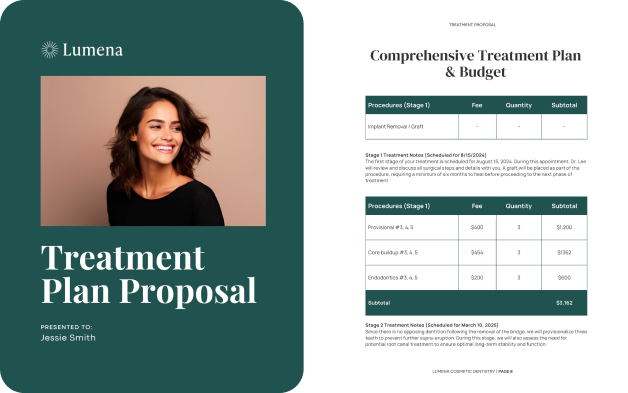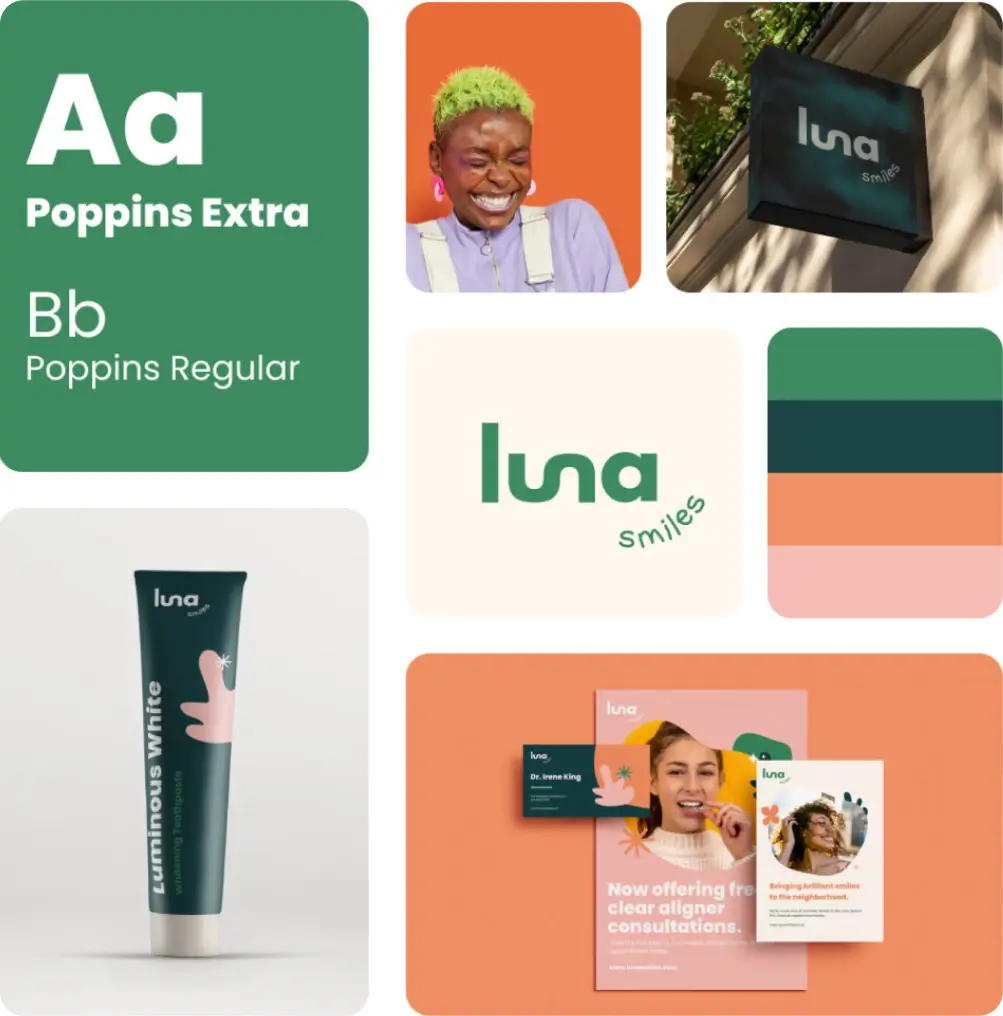How to Get Dental Reviews (Without Feeling Like You’re Begging)
Knowing how to get dental reviews is a critical skill for successful practices. Online reviews are more than a digital pat on the back. They’re
Dental Management & Treatment Plan
A Simple Strategy for Better Treatment Plan Presentations

Take a moment and think about the last time you made a big purchase– maybe buying a car. You probably didn’t buy it the first time you saw it. Instead, you likely went home and did your research online. You probably looked at the manufacturer’s website to consider features and compare options. Maybe you read reviews and looked at reliability ratings. After all, buying a car costs a lot of money, it’s natural that you’d want to feel confident and informed in your decision.
Now, consider how you present treatment plans for extensive cases in your office—a purchase often as substantial and considerably more consequential than buying a car. While you likely explained the treatment thoroughly in person, did you provide patients with anything helpful to aid in understanding or considering their decision? Did you give them resources to understand their options, clarify financial expectations, and instill confidence and excitement about their decision? Or did you simply send them home with a printout of codes?
For many patients, committing to dental treatment—especially multi-step or high-cost procedures—is a major decision. The way a treatment plan is presented can significantly influence whether a patient moves forward with care or hesitates due to confusion, fear, financial concerns, or other common objections and barriers.
A structured and patient-friendly treatment plan presentation helps eliminate uncertainty, builds trust, and increases case acceptance. It ensures that patients fully understand their options, expected outcomes, and financial commitments, as well as the timeline under which care will unfold.
If you’re ready to stop sending patients home with a confusing printout of codes and start communicating treatment plans in a clear, engaging, and professional way, Patientli has developed a Dental Treatment Proposal Template that you might find helpful. It can increase patients’ confidence in your recommendations, comfort level when getting buy-in from family, and likelihood of accepting and following through with your proposed treatment plan.
Many dental practices struggle with effectively communicating treatment plans. Without a structured approach, patients can feel overwhelmed, uncertain, or skeptical. Multi-step treatments—such as full-mouth restorations, orthodontic cases, or implant procedures—can be difficult for patients to grasp. And dentists sometimes express the feeling that the current take-home options they have to provide patients with– a treatment plan printout from their charting software– can come across as a confusing, unprofessional and arbitrary collection of codes rather than a carefully planned journey toward improved oral health. (Or at least Dr. Victor Lee at Fort Washington Dental Associates, who we’d like to credit for bringing us this idea, felt that way!)
Cost can also be a significant factor. When patients see a large number at the bottom of their treatment plan, they may experience sticker shock, especially if the value of the proposed treatment hasn’t been made clear. They also might not be the sole financial decision makers in their household and may need to make the case for treatment to a spouse or family member. Helping patients understand the benefits and long-term investment in their oral health, along with available financing options, can ease this concern.
Another common issue is that most treatment presentations lack visual aids. A verbal explanation or a printed list of codes doesn’t help patients visualize what’s being proposed or why it matters. Without imagery, diagrams, or a structured breakdown, they may struggle to make a confident decision.
Inconsistent presentation formats can also contribute to hesitation. If different providers in the same practice present treatment plans in varying ways, patients may receive mixed messages, leading to confusion. A standardized approach ensures clarity and professionalism across the practice, making it easier for patients to say yes to treatment.
A well-presented treatment plan should be clear, structured, and patient-centered. The first step is to use simple, patient-friendly language. Avoid clinical jargon or technical terms that could confuse patients. Instead, focus on relatable explanations that highlight the functional and aesthetic benefits of the proposed treatments.
Breaking down treatment phases is another crucial component. Multi-step treatments should be organized into clear stages with estimated timelines, allowing patients to understand how their care will progress over time. Clearly differentiating between urgent, preventive, and elective procedures helps patients prioritize their treatment.
Transparency about costs and financing options is essential. Rather than presenting a single total price, break down the costs alongside available payment plans or phased treatment options. This approach shifts the conversation from one about expenses to one about value, making it easier for patients to commit. It also can help patients gain a better understanding of when particular costs will be incurred, helping the total treatment amount to feel less daunting and allowing them to feel empowered in their budgeting.
Visual aids and before-and-after imagery can significantly impact a patient’s understanding and confidence in their treatment. Photographs, illustrations, or diagrams help patients visualize results and reinforce the importance of each step in their plan. Showcasing real patient transformations also helps build trust.
Finally, providing digital or printed proposals gives patients a tangible document they can review at home, without pressure and perhaps in front of their computer or phone so they can find the additional information, support or credit that they need to say yes. Receiving a structured, easy-to-read treatment plan increases the likelihood that they will follow through with scheduling their procedures.
As a piece of market research from Google puts it, “in today’s digital world, prospective patients are now active partners in their medical journeys.” A well-structured treatment plan presentation does more than just educate patients—it helps patients to enter this sort of partnership on equal footing, allowing them the time and understanding needed to build more trust with their provider and take action. Patients who understand their treatment options feel more confident in their decisions. They are less likely to delay care, as they can clearly see the value, vision and long-term benefits of their care.
Stop giving large-case patients a confusing print out of codes and put your best foot forward with our free, editable cosmetic treatment proposal. An example of just one way Patientli makes it easy for cosmetic practices to grow.

When it comes to providing patients with resources to aid their decisions around proposed treatment acceptance, there are a few things you can start doing today to help:
Send patients home with a personalized dental treatment plan they can use to understand the treatment being proposed, when each part of it will happen, how they’ll pay for it and what they can expect in the end. This free dental treatment plan template is a great starting point that you can use to professionalize your treatment proposals without a big time investment or graphic design skills.
This template allows dentists to clearly outline treatment plans in a structured format, making it easier for patients to follow along and feel confident in their decision.
With the template, practices can break down costs and financing options in a way that’s easy for patients to understand. It also incorporates visuals and explanations, reinforcing key concepts and making treatment plans more engaging. Most importantly, it provides a standardized format that ensures all team members present plans in a clear and professional manner.
Patients don’t always feel comfortable or prepared enough to get all of their questions answered in their consultation. It’s a lot of information to take in and it’s natural to mull over large purchases over a few days or weeks! You can help to aid this process by creating helpful blog posts on your practice’s website that help to address and break down common barriers or objections to care. These sort of deep-dive resources make for a great supplement to a nicely-formatted take home resource and work well when the resources are mentioned and linked within your PDF treatment plans.
You’re likely aware of many of the concerns and hang-ups that patients often voice when considering treatment, so don’t be afraid to go with your gut when coming up with topics for these sorts of posts. Having thorough answers to these questions on your website can save you and your team a lot of time spent explaining on a one-on-one basis. In general, good topics for supplementary blog content could include:
The more questions you can allow patients to answer on their own– especially those they might be uncomfortable asking, the more likely they are to feel empowered and confident in their decision.
Ready to improve your case acceptance rates? With the tips above and the Patientli Treatment Proposal Template, you’re well on your way to providing patients with better resources and presenting treatment plans with confidence!
Justin Bosco is the founder of Patientli, an all-in-one growth & marketing solution for healthcare practices. From head-turning branding to effective websites and marketing strategies, Patientli provides top dental practices and DSOs with all of the tools and services they need to be found, stand out and attract their best patients. Visit www.patient.li to browse brand and website designs you can use to get started today.

Knowing how to get dental reviews is a critical skill for successful practices. Online reviews are more than a digital pat on the back. They’re

Many dental practices set goals like “30 new patients per month” without a clear understanding of where that number comes from, whether it aligns with
Patientli in the News: Thought Leadership Across the Industry At Patientli, we believe in sharing what we know to help dental practices thrive. Our team